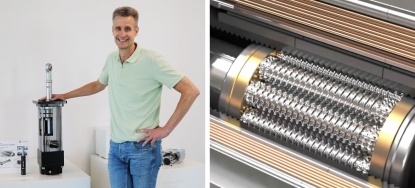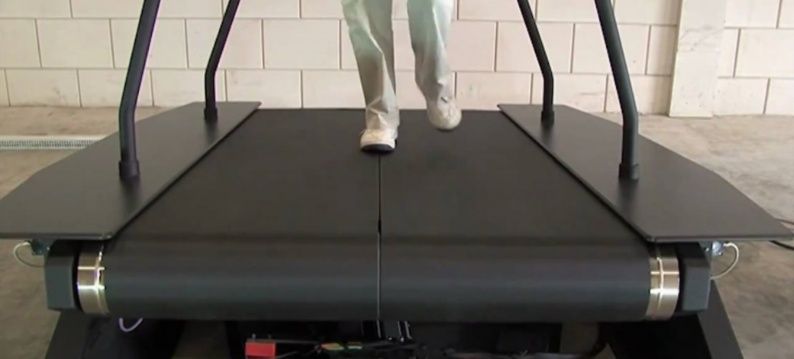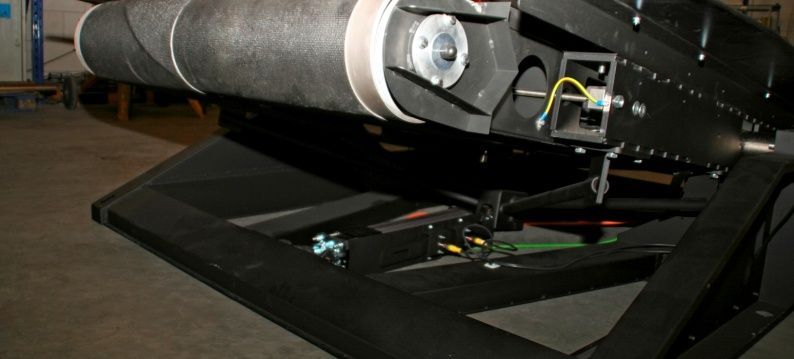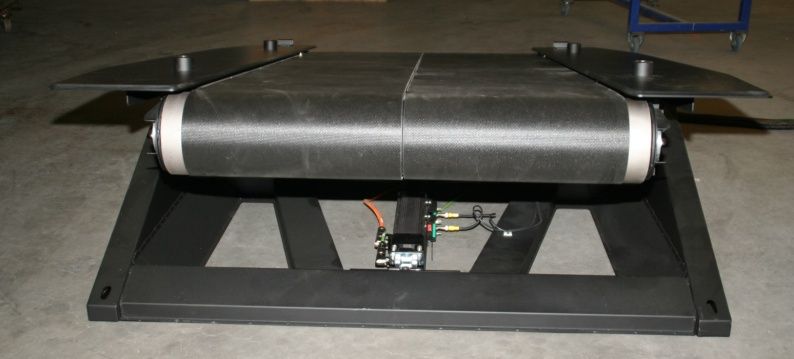2024

Roller Screw versus Ball Screw Actuators
In the ever-evolving field of engineering, roller screw technology has become a significant force in linear electric actuator motion control....
Date: 2 April 2013



What to do if you cannot handle high peak powers with trapezoidal spindles and ball screws? Peter Martens from Force Link ran against this issue during the development of their special treadmill for biomechanical analysis, research and rehabilitation. At the fair "Aandrijftechniek" he found the solution to high holding forces at the 'pitch' and 'sway' movement of the R-Mill with Exlar electrical actuators.
The R-Mill treadmill measures the ground reaction forces which the patient exerts on the belt. Combined with the information given by the cameras - in a virtual reality environment - walking analyzes are made and research and accelerated rehabilitation is supported for patients with for instance cerebral infarction.
The response of the patient to disturbances is of interest to the analysis. The Exlar GSM40 creates a 'pitch' movement, the front and back tilting of the treadmill. The Exlar GSM20 controls the 'sway' movement, a linear movement with a maximum stroke of 50 mm to the left or right.
Peter Martens is excited about this solution: "For these applications, we needed a high-quality linear actuator. A trapezoidal spindle is not sufficient in this case. We tried ballscrews, but when overloaded with peak forces, the motor sagged. "
To product information Exlar GSM servoactuators »
We supply slewing ring bearings, oscillating mountings, tensioner devices from stock and we also have spiral bevel gearboxes, servo gears and electromechanical actuators in our delivery program.
In addition we also select and offer the right components and systems for motion control solutions, such as servo gear motors, linear servo actuators and complete XYZ cartesian systems.
ATB Automation uses cookies to give you the best browsing experience possible on our site.
Continue to use the site as normal if you agree to this.
We use cookies on our website to create the most effective website possible for our users. Cookies are small text files that are sent to and stored on your computer, smartphone or other device for accessing the internet, whenever you visit a website. Cookies allow for us to measure and personalise. The cookies we use allow us to improve your experience when using our website and ensure the website performs as you expect it to. It also allows us to offer eg videos on our website and display social media share buttons. On this site, the cookies we use include 'analytics' cookies, to analyse how users use this site to help us make our website better for those who visit it regularly.
The settings below allow you to specify which cookies you accept. Please note that by not accepting all cookies, some parts of the site will not work properly.